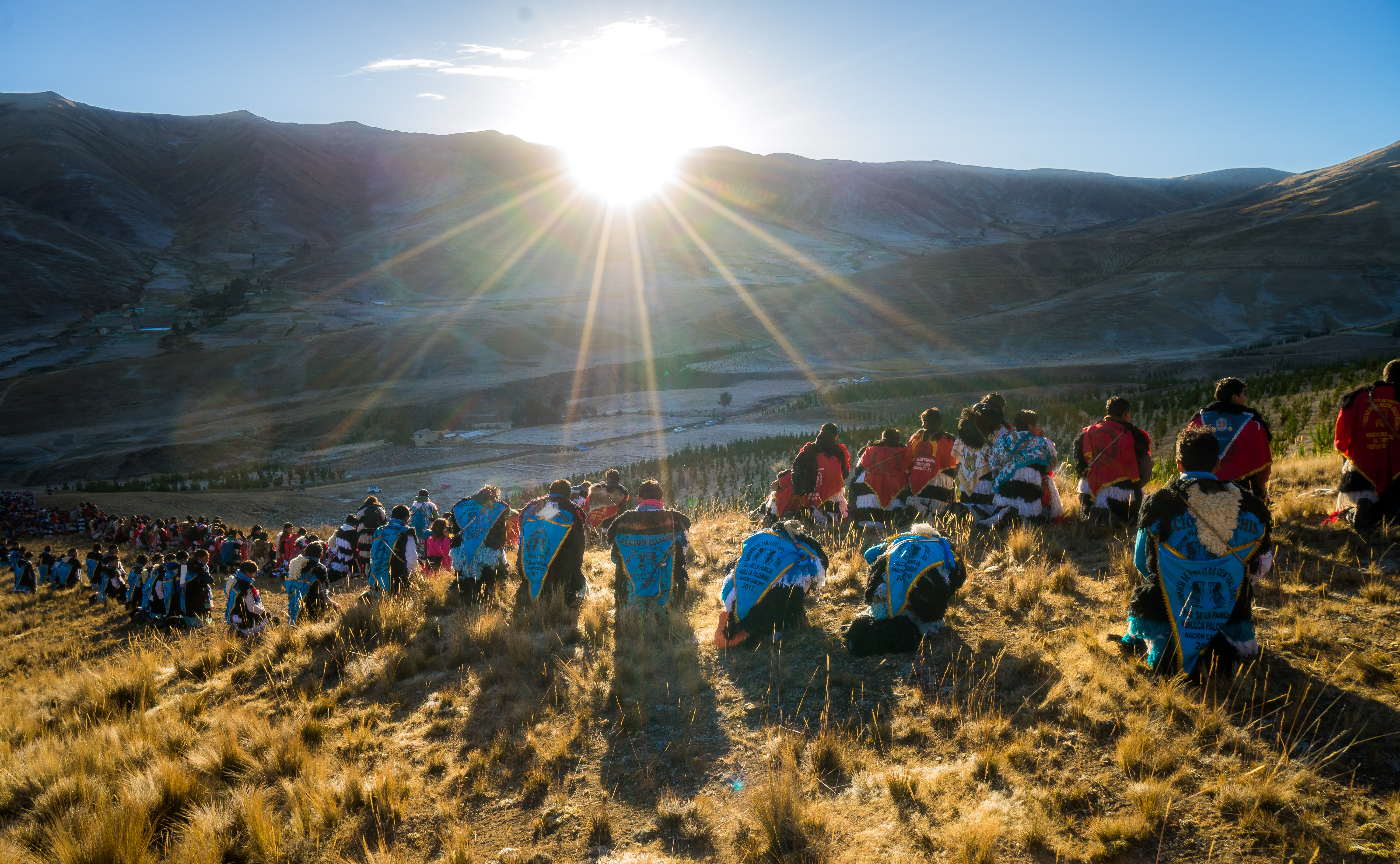Qoyllur Rit’i – Inti Alabado – Tayankani

In the Andes mountains of Cusco, every year more than 100,000 people come with music and dance in pilgrimage to the sanctuary of the Lord of Qoylloriti at the foot of the apu (sacred mountain) Colque Punku. They come to pay tribute to him, to thank him for a miracle, or to ask him for a blessing.
The pilgrimage to the Lord of Qoyllu Rit’i, Starry Snow in Quechua, is one of the most impressive manifestations of religious fervor of the Andean population where faith is said to move even mountains.
One of the traditions of the Qoyllur Rit’i pilgrimage is the 24-hour procession, a 30-km walk in which the lord of Tayancani travels to the heights of Ocongate to reach his church in the town of Tayancani. This shows a deep faith.
[mnky_ads id=”28259″]In the procession is seen those who carry the image, with members from all nations, take turns of 20 steps each by custom while others waiting in line their turn. This goes on day and night for 24 hours. To the front goes always the Arariwa, pucapacuri or wayrichunchu guiding, dancing and preparing the procession route.
Making this pilgrimage with them was one of the most amazing experiences I have had. It was like being in a magical world because the feeling of meeting a God or Apu is strong and is in connection with Pachamama Santa Tierra, the Earth Mother, and the Qoyllorit’i apu.

On the way back from the sanctuary to Ocongate it is magical by night and by day. On the trail at night you are under full moon and the Milky Way. You can see the Apu Ausangate while you walk. That and hearing the sound of music performed along the way is like being in another dimension.
After a long walk throughout the day and all night, the comparsas (dance troupes) and pablitos finally arrive at the area known as Inti llusimuq, the place of the sun’s coming out, known as Puyosqori. This is where the “Inti Alabado” (Praise the Sun) will be performed. All the comparsas wait on their knees in for the reverence of the sun before continuing their trek to Ocongate as the final destination.
At the precise moment when the sun makes its appearance, everyone bends on their knees to receive it. Musicians interpret praises in music and everything is a sacred. It is all carried out in the same way it was hundreds of years ago, ever since the Inca era. People say you should understand that this is the real Inti Raymi, because this is an ancestral ritual and not a staging.
In 2011 the pilgrimage to the sanctuary of the Lord of Qoyllur Ritti in Cusco was declared Intangible Cultural Heritage of Humanity by UNESCO
[mnky_ads id=”28259″]A story relates:
The “Mayta” family was dedicated to herding and agriculture. In their time. It was very difficult to raise animals and cultivate because of the cold. The Maytas’ father decided to send his youngest son to do the work of a shepherd, to take care of his sheep. The situation of the family then improves. His cattle sheep increase from what the child was doing.
One of his brothers asks why? He spies on his brother and one day sees him playing with another child, a white-skinned boy with snow-white hair. The brother goes and tells his father what he had seen. The father goes to see but does not do anything. He sees nothing wrong and just watch the two children play. He lets their friendship continue.
After a while the boy Manuel Mayta goes one day to his dad and asks him to please buy clothes from his friend. He took him a sample of old clothes that belonged to his friend. The father, feeling good will, agrees to buy clothes. He then travels to Cusco to find clothes. In the city of Cusco when he goes to find similar cloth to get clothes for the boy, they tell him that this cloth was only sold to dress the saints. The cloth seller sent him to a parish priest. The parish priest saw the fabric the father brought and he was surprised because they were very old cloth used for dressing the saints.
The alarmed parish priest accused the father of a desecration of the saints. He demands the father to take him to his son once the father tells him the story of his son the shepherd. The father and the parish priest go in search of the children, who, upon noticing the strange presence of the parish priest, begin to flee in the direction of the snow. While running, the little boy falls on a huaca, a sacred site, and dies while the white-skinned child continues to escape. He suddenly disappeared and in that place appeared a tallanca tree with the image of the child. That is where the tayankani cross is now found.

















